The expiration date of shaving cream refers to the duration during which it remains effective, safe, and suitable for use.
Like many shaving products, like shaving foam or shaving gel, shaving cream also has a limited shelf life.
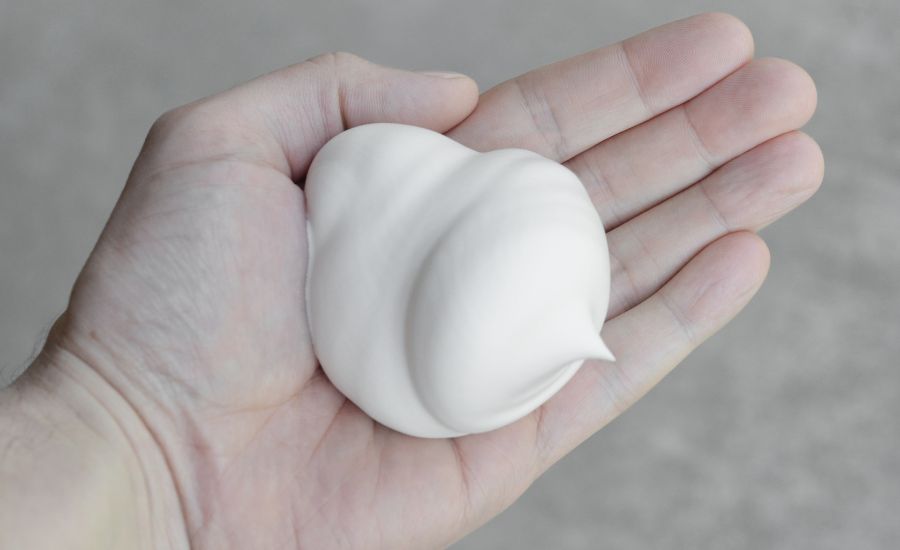
Factors affecting shaving cream longevity
Being mindful of these factors will help you maximize the time your shaving cream lasts and ensure that you could determine expired shaving cream.
Composition and ingredients of shaving cream
The composition and ingredients of shaving cream play a significant role in determining its expiration date.
Different ingredients may have varying levels of stability and resistance to degradation.
If you use products that contain natural ingredients, remember that they may have a shorter shelf life compared to those with synthetic ingredients or preservatives.
Packaging and storage conditions
The packaging and storage conditions of shaving cream can greatly impact its longevity. Proper packaging helps to protect the product from exposure to air, light, and moisture, which can accelerate the breakdown of its components.
Shaving creams stored properly (in sealed, airtight containers or tubes) tend to have a longer expiration date compared to those stored in open containers.
It is advisable to store and use shaving cream or shaving foam in a cool, dry place away from direct sunlight or heat sources, as these can compromise its quality and effectiveness.
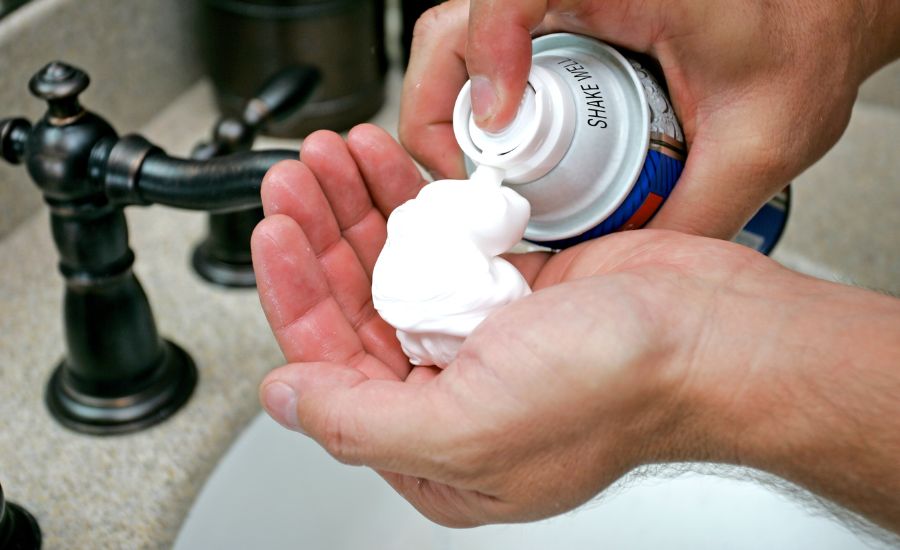
Frequency and volume of usage
The frequency and volume of usage also influence the expiration date of shaving cream.
If you use shaving cream infrequently or in small amounts, the product may last longer as it is less exposed to air and contaminants.
On the other hand, if you use shaving cream regularly and in larger quantities, the product may be depleted faster. Over time, repeated exposure to air during usage can lead to oxidation and degradation of the product.
Additionally, if shaving cream is frequently exposed to moisture or water, such as leaving the container open in a humid bathroom, this expired shaving cream can facilitate bacterial growth and reduce its shelf life.
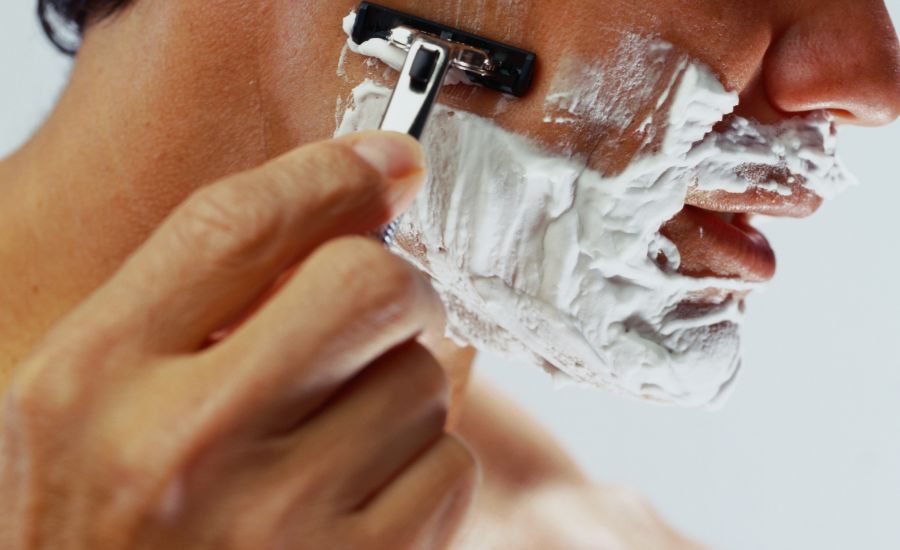
Signs of spoiled shaving cream
Knowing these signs of shaving cream spoilage — changes in texture and consistency, unpleasant odor or change in the scent of the cream, and allergic reactions or skin irritations — will help you use shaving cream safely and understand if it is expired shaving cream.
Changes in texture and consistency
One of the key signs of expired shaving cream is noticeable changes in its texture and consistency.
As shaving cream ages, it may lose its moisturizing properties and become clumpy, lumpy, or separated.
Instead of forming a rich and creamy lather, it might fail to create the desired foam or gel consistency.
These changes can affect the effectiveness of the shaving cream, making it more difficult to spread evenly on the skin and reducing its lubricating properties.
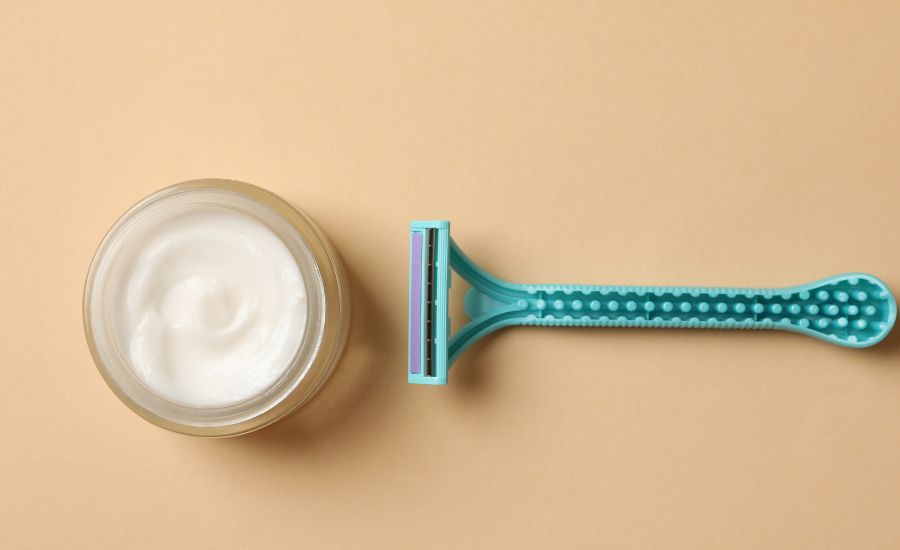
Unpleasant odor or change in scent
Another sign of shaving cream has gone bad is the development of an unpleasant odor or a noticeable change in its original scent.
Over time, the ingredients in shaving foam or cream can break down, resulting in the release of off-putting smells or the alteration of its fragrance.
If it smells rancid, sour, or different from its initial scent, or seems light brown, it is a clear indication that your shaving cream has gone bad.
Allergic reactions or skin irritations
Expired shaving cream may also lead to allergic reactions or skin irritations. As the product ages, its composition can change, potentially making it more irritating to the skin and increasing the chances of razor burn.
If your sensitive skin experiences redness, itching, razor burn sensation, or any other signs of skin irritation after using the product that you have used without issues in the past, it could be a result of the product’s spoilage.
Allergic reactions and skin irritations are important indicators that it is time to replace your shaving cream.
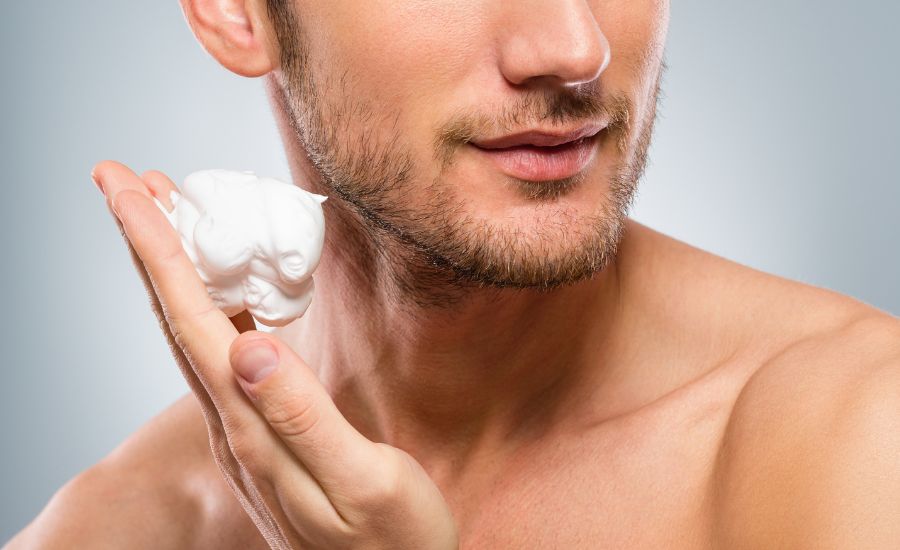
How long does shaving cream last?
Understanding the shelf life of shaving cream helps to ensure that you are using a product that is still effective and safe for your skin.
General guidelines and industry recommendations
While there is no universal timeframe that applies to all products, there are some general guidelines and industry recommendations to consider.
On average, most products have a shelf life ranging from 12 to 24 months from the date of manufacture.
However, it’s important to note that these timeframes are approximate, and the actual shelf life can vary.
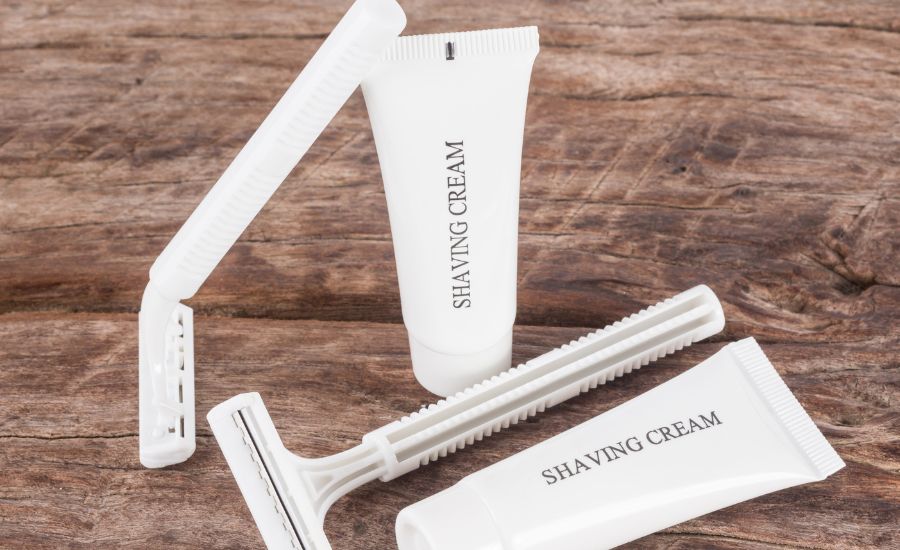
When does shaving cream expire?
Some products may include an expiration date on their packaging, indicating the date by which the product is guaranteed to remain effective and safe for use.
It is essential to pay attention to the manufacturing date and expiry dates and follow them accordingly.
When does shaving cream expire, how do you determine that? The expiry date is typically based on extensive testing conducted by the manufacturer to determine the product’s stability and performance over time.
Using the product past its expiration date (expiry date) can lead to decreased effectiveness, increased risk of skin irritation, or even bacterial contamination.
Differentiating between aerosol and non-aerosol shaving cream
There can be differences in the shelf life between aerosol and non-aerosol shaving creams.
Aerosol products typically contain additional ingredients such as propellants, which can affect their stability and shelf life.
As a result, aerosol shaving creams may have a slightly shorter shelf life than non-aerosol ones.
Check the specific recommendations provided by the manufacturer for the type of shaving cream you are using to ensure optimal usage and safety, especially if you have sensitive skin.
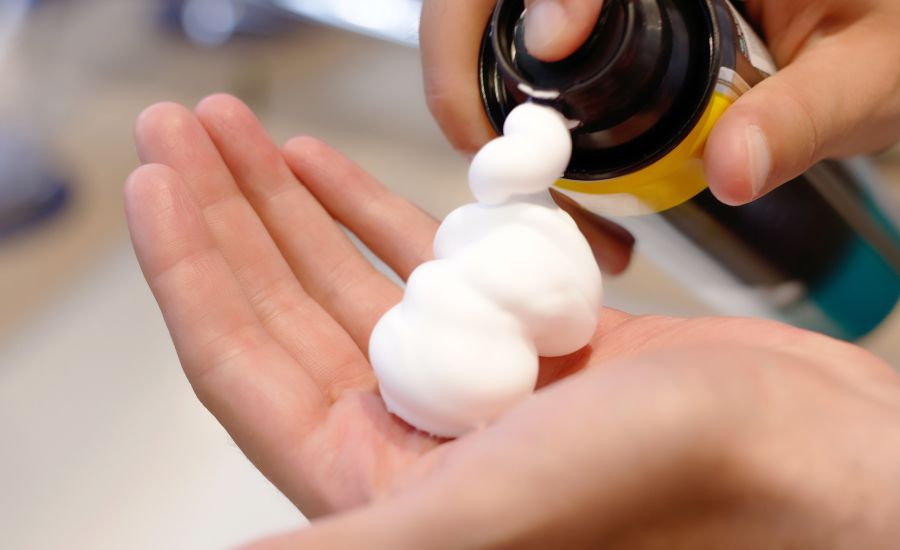
Extending the life of shaving cream
By following proper storage techniques, practicing hygienic habits, and exploring DIY methods, you can prolong the life of your shaving cream.
These practices not only help maintain the quality of the product but also contribute to a more enjoyable and effective shaving experience.
Proper storage techniques and tips
To extend the life of your shaving cream, it is essential to employ proper storage techniques. Consider the following tips:
- Keep it in a cool and dry place. Store your shaving cream in a cool area away from direct sunlight and heat sources. High temperatures can accelerate the breakdown of its ingredients and reduce its shelf life.
- Seal the container tightly. Ensure the lid or cap of your shaving cream container is tightly sealed after each use. This helps prevent air and moisture from entering, which can contribute to its spoilage.
- Avoid storing it in the shower. While it may be convenient to keep your shaving cream in the shower, constant exposure to heat and humidity can promote bacterial growth and reduce its longevity. Instead, store it in a separate, dry location, just like a razor blade.
Hygienic practices to prevent contamination
Maintaining proper hygiene practices can also contribute to extending the life of your shaving cream. Here are some recommendations:
- Use clean hands or tools. When scooping or applying shaving cream, make sure your hands are clean. Avoid introducing dirt, bacteria, or other contaminants into the product.
- Avoid water contamination. Keep water out of your shaving cream container as much as possible. Water can promote bacterial growth and compromise the quality of the product. Scoop or dispense the desired amount of shaving cream onto your hand or a clean surface, rather than directly into wet hands.
- Rinse razors thoroughly. After each use, rinse your razor thoroughly to remove any leftover shaving cream, hair, or debris. This prevents the transfer of contaminants back into the shaving cream container.
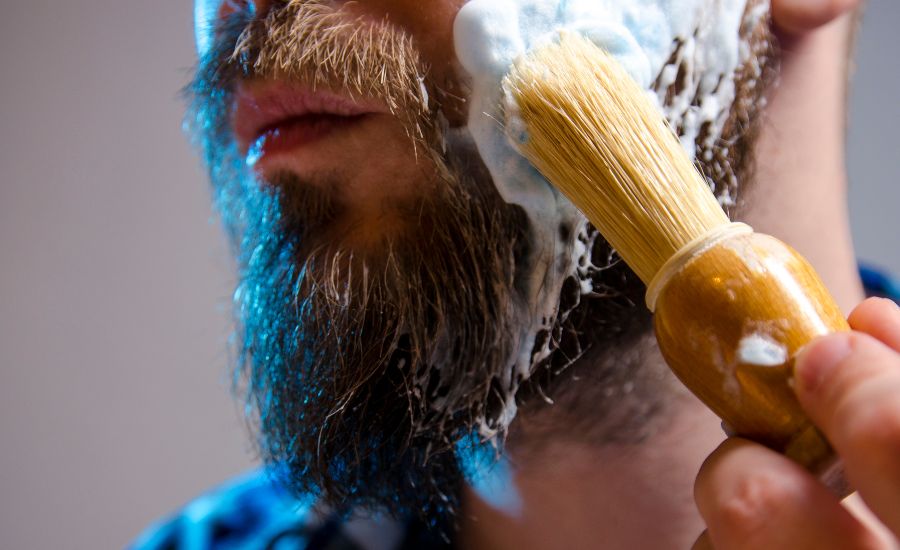
DIY methods to revive and prolong the use of shaving cream
If your shaving cream starts to dry out or lose its effectiveness, there are some DIY methods you can try to revive it:
- Add a small amount of water. Gradually add a few drops of water to the shaving cream and mix it thoroughly. This can help restore some moisture and improve its texture and lather.
- Use a moisturizer or oil. Add a small amount of moisturizer or oil, such as coconut oil or jojoba oil for a smooth shave. Mix well to incorporate the added moisture. This can help rejuvenate dry or stiff shaving cream and is good for hair follicles.
- Whip or blend the shaving cream. Use a hand mixer or blender to whip or blend the shaving cream for a few seconds. This can help incorporate air and make it fluffier, enhancing its performance.
While these DIY methods may help extend the use of shaving cream that is slightly dried out, it’s important to note that they may not fully restore the original quality of the product.
Safety considerations and potential risks
To use shaving cream that is past its prime or has deteriorated can pose certain risks. Expired or degraded shaving cream may not provide adequate lubrication, increasing the chances of cuts, nicks, and skin irritations during shaving.
Moreover, the presence of harmful bacteria or mold in the product can lead to skin infections or other adverse reactions.
To ensure your safety during the shaving process of your facial hair, it is best to replace your shaving cream once you notice any signs of spoilage.
Eco-friendly alternatives to consider
When replacing your shaving cream, consider eco-friendly alternatives that are both effective and sustainable. Some options to explore include:
- Shaving soap. Shaving soap is a traditional and environmentally friendly alternative to shaving cream. It typically comes in bar form and can be used with a shaving brush to create a rich lather for hair follicles.
- Shaving cream in refillable containers. Look for shaving creams that come in refillable or reusable containers. This reduces packaging waste and allows you to replenish the product without discarding the entire container.
- Natural and organic options. Explore shaving creams made from natural and organic ingredients. These products often prioritize sustainability, and their formulations may have a reduced impact on the environment.
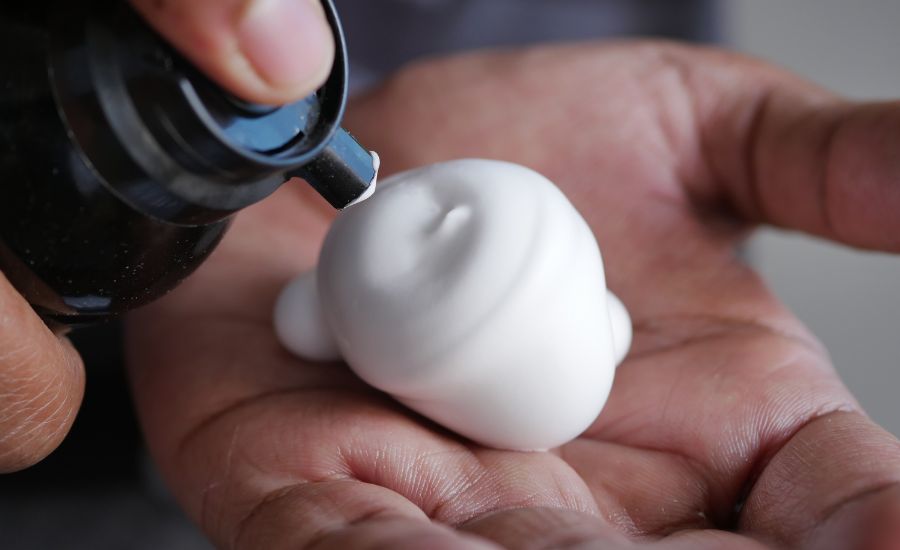
Conclusion
In conclusion, shaving cream is an essential component of a smooth and comfortable shaving experience.
Understanding how long shaving cream lasts and knowing when to replace it is crucial for your safety, and ensures the product’s efficacy.
FAQ
How do you know if shaving cream is expired?
There are several signs that shaving cream expires. These include changes in texture or consistency, an unpleasant odor or change in scent, the presence of mold or discoloration, and skin irritations or allergic reactions after use.
It’s important to check the expiration date if provided and replace the shaving cream if any of these signs are observed.
How long should shaving cream stay?
The shelf life of most shaving creams can vary depending on factors such as their formulation (for example, creams with natural ingredients deteriorate faster), packaging, and storage conditions.
On average, shaving cream lasts from 12 to 24 months from the date of manufacture.
However, it’s important to note that these timeframes are approximate, and it’s always best to check the specific expiry date provided by the manufacturer.
How long does 7oz of shaving cream last?
The duration that a 7oz container of shaving cream will last depends on factors such as the formula (if it has natural ingredients it can deteriorate faster), the frequency and volume of usage. It is challenging to provide an exact timeframe as individuals’ shaving habits differ.
However, on average, a 7oz container of shaving cream can last anywhere from a few months to several months, depending on how frequently it is used and the amount used per shave.
Does Neutrogena shave cream expire?
Yes, Neutrogena shaving cream expires too, like any other shaving cream, and has an expiry date. It’s important to check the packaging or product information for an expiration date or shelf life guidance provided by Neutrogena.
If the shaving cream has passed its expiration date, or if you notice any signs of spoilage such as changes in texture, an off-putting odor, or skin irritations after use, it is recommended to replace it for optimal performance and safety.

